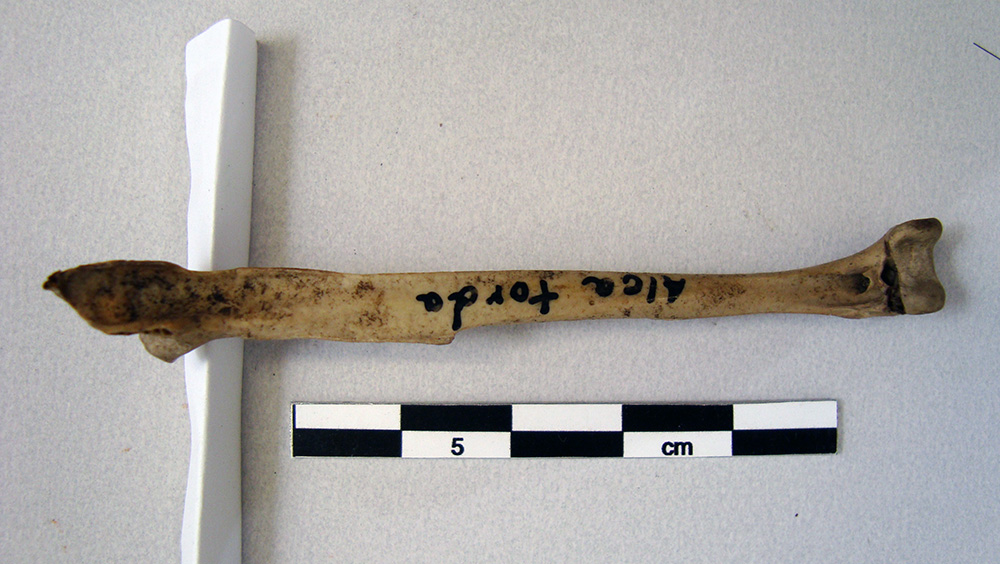Razorbill in Bremen
Hans Christian Küchelmann, 20 March 2019
During excavations in 2011 in the former defense ditch of the city of Bremen huge amounts of animal bones have been found. The material has been analysed in the course of the Hanse Project since it contained a large amount of cod (Gadus morhua) bones. But there were also other interesting finds pointing to a trade connection with the North Atlantic. Of particular interest is a bone of a razor bill or lesser auk (Alca torda) with cut marks. This bird does not live on the North Sea coast and must have been brought to Bremen from North Atlantic regions e.g. from Shetland, Iceland, the Faroes or Northern Norway, probably as a by-product of the Bremen North Atlantic trade for stockfish.

Julia Schmidt, public relations officer of the Landesarchäologie Bremen, has written a blog about this find (in German) that can be accessed on the Facebook page of the Landesarchäologie.
Posted in: Announcements, General, Press, Stories
Comments